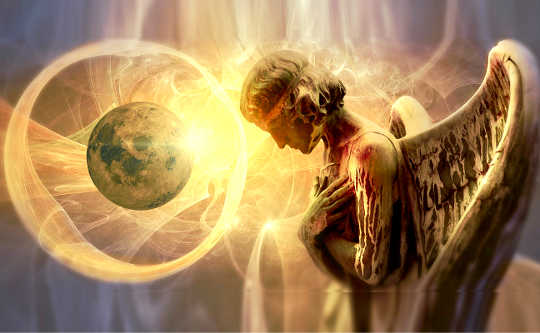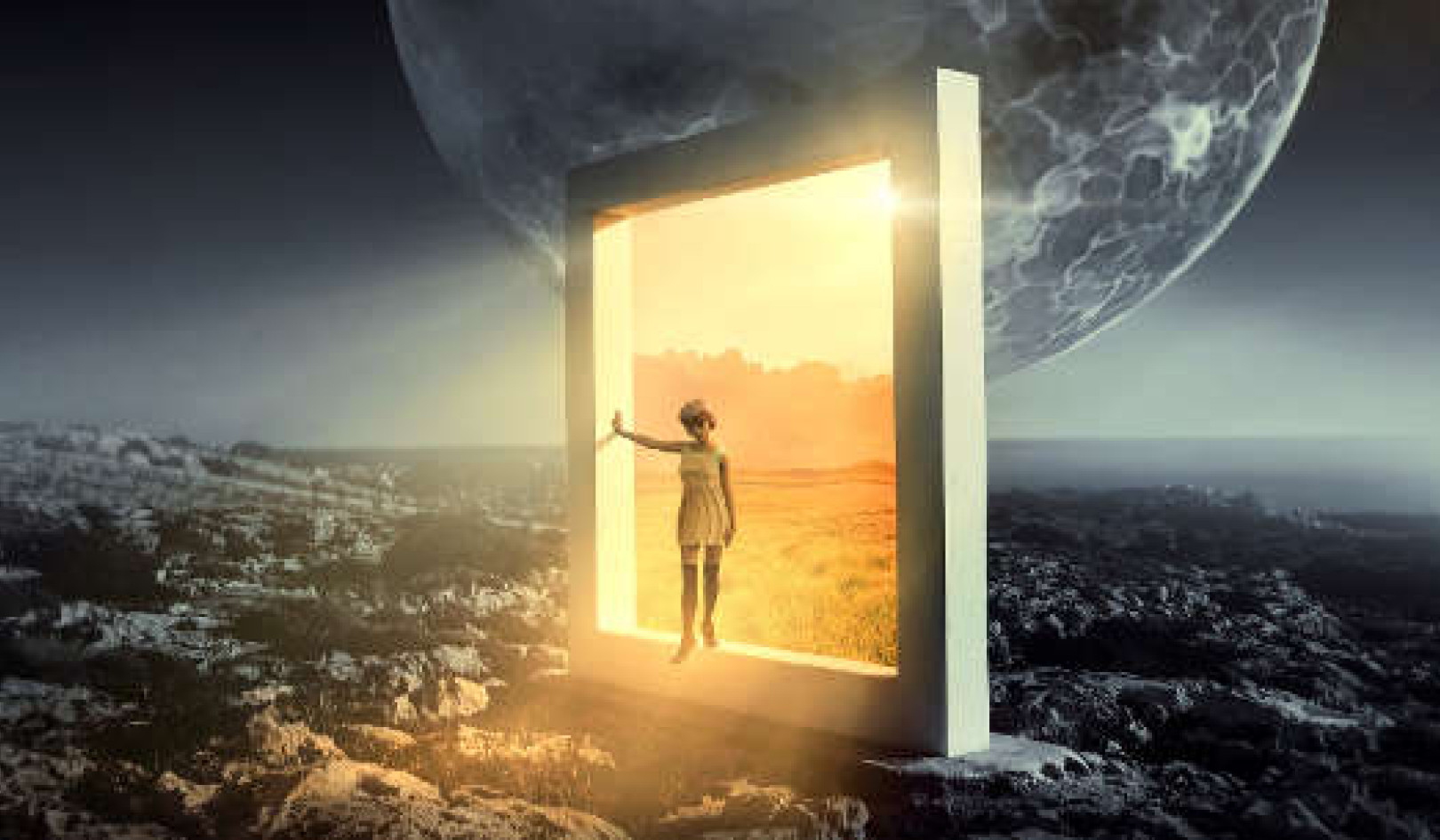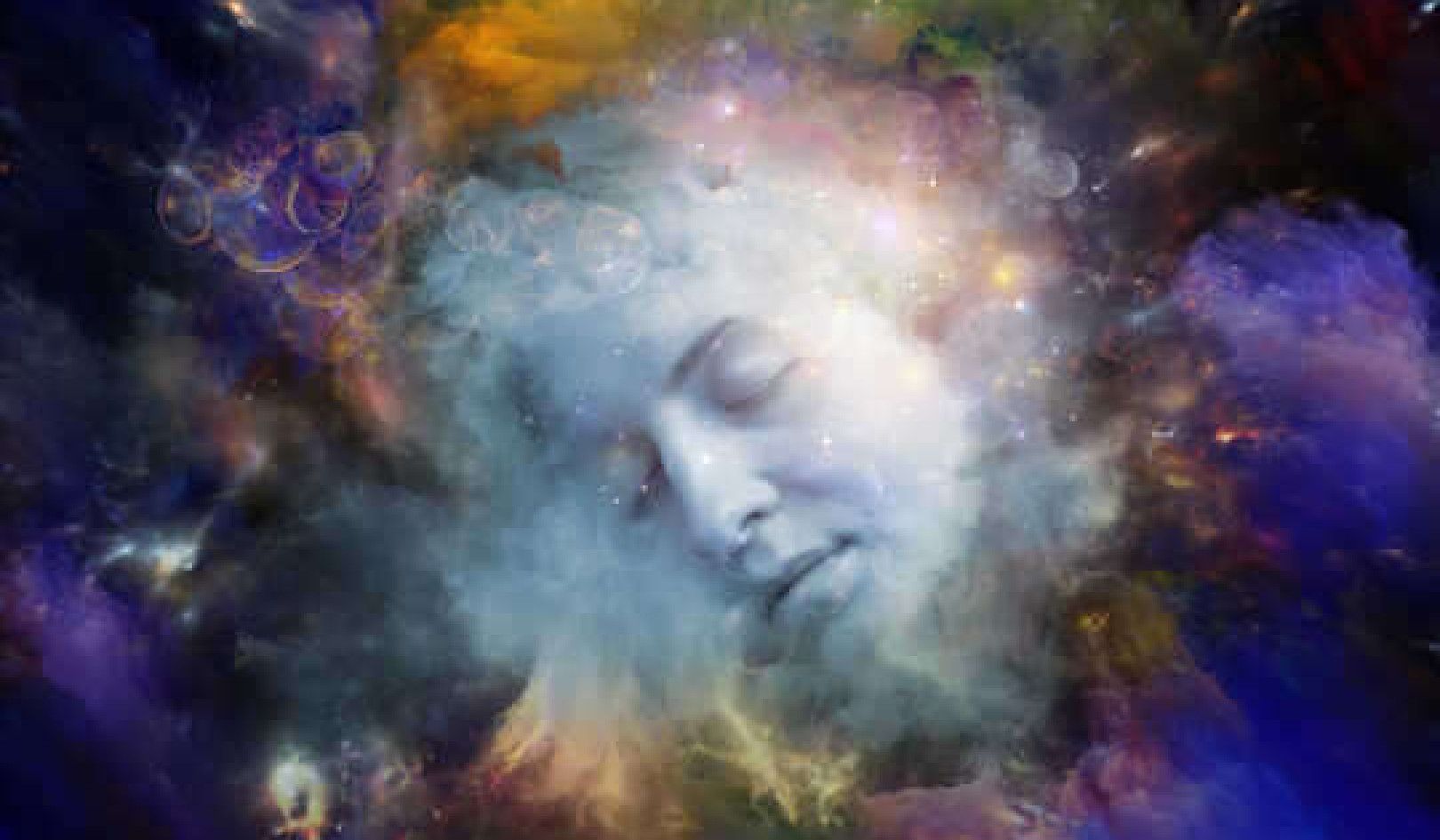
Image by Stefan Keller
People are interested in spiritual experience (if only at times of crisis or transition in their lives), and the clergy have not been trained to guide them through such experiences. Consequently, if the clergy are to remain useful, they will both have to give some instruction about people’s individual experiences and to show how such spiritual experience can be cultivated. They will have to have this knowledge -themselves—or, at the very least, be able to consult those who do. Alan Watts describes the situation in a 1947 letter:
All great religions, although their inner essence is esoteric and inevitably the province of the few, have to make some provision for the world at large. This involves a hardening and conventionalizing process which renders all popular religion . . . superficial—an imperfection which is simply inevitable, but which we must no more resent or deplore that the fact that children of six cannot be taught the calculus. When certain persons insist that this exoteric religion is the whole truth, and that there is no other way of salvation, we have fanaticism, which is almost inevitable.
Little real harm is done by this process, so long as a nucleus of persons maintains the interior religion, which is substantially the same in all places and periods. I see no particular point in changing the external form of the religion of the West. . . . Indeed I think it would do a great deal of harm. My concern is that the inner religion should flourish within official Christianity so that the Church will be able to instruct and guide the increasing, but still relatively small, number of persons who are ready to profit by it. Furthermore, where such a nucleus does not exist, there is a general decline of the religious and social order. But the constructive influence of such a nucleus is out of all proportions to its numbers. I do not think that the interior religion should be given a name or form so as to be externally recognizable, for it will thus be rushed into the position of a sect and involved in argumentation, propaganda, and controversy, the terms and methods of which are radically inapplicable to mystical knowledge.[Alan Watts, letter to Jim Corsa: Collected Letters]
Two tiers, then: exterior religion, which is for the many and which can provide them with advice and consolation when they need it; and esoteric religion, consisting of those who have enough inner experience to provide some guidance to others—even to ordinary clergy, who may not have much of this experience themselves.
This is a serious issue that Western civilization has not yet solved (at least in recent times). Watts’s verdict about it may be gauged from his life. When he wrote the words above, he was an Episcopal priest: three years later he laid his vocation aside. The overall situation does not appear to have changed significantly in the seventy years since he was writing.
Cultivating Spiritual Experience
A more flexible use of ritual. It is naive to think that ritual is unnecessary or dispensable. In certain contexts, it may become more important than ever (something we see in the Wiccan and Neopagan movements). But it will be based more on certain fundamental principles that can be used flexibly than on forms that have been followed rigidly and mechanically.
The restoration of beauty to religion. In the Middle Ages and in many traditional cultures today, people have lived in squalor and misery, but they could always go to the church or the temple and submerge themselves in beauty and the life of the spirit at the same time. This is hardly possible today, especially in the United States. American culture is indifferent or hostile to beauty in any but the shallowest and most commercial forms, and religious culture is no exception. The typical American church looks like a veterans’ hall with a large cross hanging at the back. Author Edward Robinson observes that today there is “indeed an almost complete separation between the world of religion and the world of the contemporary arts.” [Language of Mystery, Edward Robinson]
This relentless onset of featurelessness, indeed ugliness, has had consequences: it must have something to do with the current plague of mental disorders. A religion—or, if you prefer, a spirituality—that provides this missing element could do much to heal the human soul.
Humanistic ethics. The Deity will not necessarily be viewed as remote and indifferent to human behavior, but people will acknowledge that it is not God that they are hurting when they do wrong, it is themselves and one another. The basic ethical tenets, which are universal—exemplified in the Sermon on the Mount and the Eightfold Noble Path of the Buddha—will remain as they are. Time has proved their value: newer models of morality—like utilitarian philosophy—affirm much the same ethical rules without invoking God. At the same time, moral injunctions that reflect the thinking of earlier ages and are of no present use (even if they are embodied in scripture) will be permitted to fade away. (To take one more or less uncontroversial example, ancient religious precepts often involve rites of physical purification. These are less useful today in the light of modern hygiene and sanitation, even if ritual purification still has value.)
A recognition that the many forms of religious thought and representation are undergirded by certain universal truths. It will be easier to see the same ideas and principles embodied in the gods of all faiths, even if they cannot be simplistically reduced to a single essentialist denominator.
A more rigorous theology. This feature would seem to run counter to many of the ones that I have already set out. But if religious dogmatism continues to weaken, it will be necessary to reformulate theology in an intellectually convincing way.
Is theology necessary? Some have tried to dispense with it, but this is not so easy. It creates an ideological vacuum that will have to be filled. Some will give up and take refuge in old doctrines and rituals. Others will be—and have been—drawn to the wildest and most dangerous political and social theories. As was once said, “Those who do not believe in God will not believe in nothing. They will believe in anything.” An epitaph for the twentieth century.
Resilient worldviews. Take the human body as an analogy. A resilient body is strong, flexible, and able to shake off shocks with ease. An ailing body is rigid and hypersensitive to irritation. Similarly, a resilient worldview can easily adjust and respond to discomfitures such as opposing ideas. It does not seek out disruption, but can handle it easily when it occurs. I think that the coming age will be marked, not so much by a single, overarching worldview (as was the case with Christian civilization), but by a number of worldviews, ranging from the deeply religious to the totally secular, that can live with one another and accept that no single one is likely to give a complete picture of the truth.
A recognition of the limits of science. I do not think that the Age of the Holy Spirit will be subservient to science as the Age of the Son has been in its waning centuries.
In the first place, science is a method, not a doctrine. It is a particular approach to solving particular, and quite limited, questions. Its findings can never be taken as dogma. As Karl Popper said, these findings always remain subject to future falsification: “The game of science is, in principle, without end. He who decides one day that scientific statements do not call for any further test, and that they can be regarded as finally verified, retires from the game.”[Popper Selections]
In the second place, science is facing its own epistemological problems, which are likely to grow more acute. These are not problems with the scientific method as such, but rather with current scientific findings that are dishonestly held up as ultimate truths. Earlier I mentioned what I might call the neurological loop: science has shown that our cognition—at least our ordinary cognition—is heavily circumscribed by our perceptual apparatus. If so, why should we suppose that the data given by this apparatus give us any complete picture of the universe?
Another problem is that science—particularly physics—is producing conclusions that are more and more remote from our daily experience and in many ways contradict it. This may be the sign of a late paradigm (in the terminology of Thomas S. Kuhn) that is about to be overturned, just as the increasing complexity of epicycles in the late versions of the Ptolemaic theory showed the need for the Copernican paradigm. Be that as it may, “science” has often come to refer to a naive materialism that is supposedly vindicated by scientific findings, a view that I call scientism. This pseudoreligion insists that there is nothing more than matter and that this is matter as commonly understood. But scientism cannot have it both ways. It cannot both place its faith in scientific findings and try to pretend that these findings validate the ordinary view of reality.
As a result, it is hard to predict how this nascent faith will jibe with science. But that is not because of a rise of irrationalism (or it need not be), but because science needs to start answering certain crucial questions that it has long been permitted to beg.
Furthermore, it seems that science is beginning to rethink its own premises. In my book The Dice Game of Shiva: How Consciousness Creates the Universe, I argued for the primacy of consciousness in reality as we know it. Now, ten years after the book was published, the idea is becoming increasingly reputable. On the Quartz website, writer Olivia Goldhill observes:
Consciousness permeates reality. Rather than being just a unique feature of human subjective experience, it’s the foundation of the universe, present in every particle and all physical matter.
This sounds like easily-dismissible bunkum, but as traditional attempts to explain consciousness continue to fail, the “panpsychist” view is increasingly being taken seriously by credible philosophers, neuroscientists, and physicists, including figures such as neuroscientist Christof Koch and physicist Roger Penrose.
We should be cautious, then, in speculating about the future relations between science and religion when both could soon turn out to be quite different from what they are now.
It is an open question too what relation this new faith will have toward the political and social order. As Lao-tzu understood, the presence of laws is evidence of a decay of morals; the presence of morals is evidence of a separation from inner truth.[Tao Te Ching]
Of course we need government—what Hobbes called the “Sovereign”—to keep the beasts within us in check. Or do we? The Chinese novelist Yu Hua writes about the mood in the Chinese capital during the Tienanmen uprising:
Beijing in the spring of 1989 was anarchist heaven. The police suddenly disappeared from the streets, and students and locals took on police duties in their place. It was a Beijing we are unlikely to see again. A common purpose and shared aspirations put a police-free city in perfect order. As you walked down the street you felt a warm, friendly atmosphere all around you. You could take the subway or a bus for free, and everyone was smiling at one another, barriers down. We no longer witnessed arguments in the street. Hard-nosed street vendors were now handing out free refreshments to the protesters. Retirees would withdraw cash from their meager bank savings and make donations to the hunger strikers in the square. Even pickpockets issued a declaration in the name of the Thieves’ Association: as a show of support for the students, they were calling a moratorium on all forms of theft. Beijing then was a city where, you could say, “all men are brothers.”[China in Ten Words]
The optimist in me sees this as a presage of times to come.
In human life as in Newtonian physics, each reaction produces an equal and opposite reaction. We see this fact embodied in the term reactionary. Thus any given trend is unlikely to advance in a steady, unimpeded, linear way. There will be waves and counterwaves, even if the long-term movement is going in a single direction. The most obvious type of religious reaction is fundamentalism. It will probably not vanish any time soon.
As I have said, I am describing possibilities rather than making predictions. But I think there is some hope that many of these features, which after all are already present, will take root and grow over the next century.
©2019 by Richard Smoley. All Rights Reserved.
Excerpted with permission from A Theology of Love.
Publisher: Inner Traditions Intl.www.innertraditions.com
Article Source
A Theology of Love: Reimagining Christianity through A Course in Miracles
by Richard Smoley Richard Smoley reframes Christian theology using logical, consistent, and easy-to-understand teachings of unconditional love and forgiveness. He draws inspiration not only from the Bible, but also from Hinduism, Buddhism, Gnosticism, and from esoteric and mystical teachings, such as A Course in Miracles and the Sefer Yetzirah, the oldest known Kabbalistic text. He explains how the “fallen” state of the human condition, not one of sin but of oblivion, leads us to experience the world as flawed and problematic--not wholly evil, but not wholly good.
Richard Smoley reframes Christian theology using logical, consistent, and easy-to-understand teachings of unconditional love and forgiveness. He draws inspiration not only from the Bible, but also from Hinduism, Buddhism, Gnosticism, and from esoteric and mystical teachings, such as A Course in Miracles and the Sefer Yetzirah, the oldest known Kabbalistic text. He explains how the “fallen” state of the human condition, not one of sin but of oblivion, leads us to experience the world as flawed and problematic--not wholly evil, but not wholly good.
For more info and/or to order this book, click here. (Also available as an Audiobook and e-Textbook edition.)
About the Author
 Richard Smoley is one of the world’s leading authorities on the Western esoteric traditions, with degrees from both Harvard and Oxford. His many books include Inner Christianity: A Guide to the Esoteric Tradition and How God Became God: What Scholars Are Really Saying about God and the Bible. Former editor of Gnosis, he is now editor of Quest: Journal of the Theosophical Society in America. Visit his website: http://www.innerchristianity.com/
Richard Smoley is one of the world’s leading authorities on the Western esoteric traditions, with degrees from both Harvard and Oxford. His many books include Inner Christianity: A Guide to the Esoteric Tradition and How God Became God: What Scholars Are Really Saying about God and the Bible. Former editor of Gnosis, he is now editor of Quest: Journal of the Theosophical Society in America. Visit his website: http://www.innerchristianity.com/




























